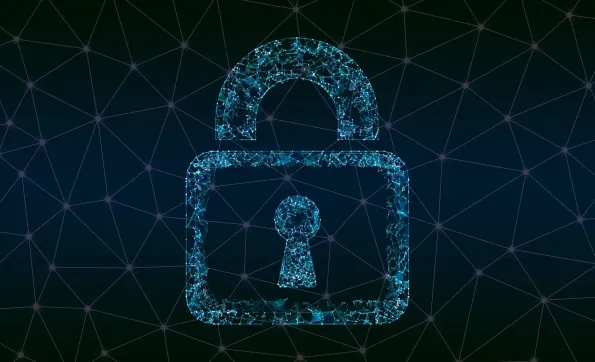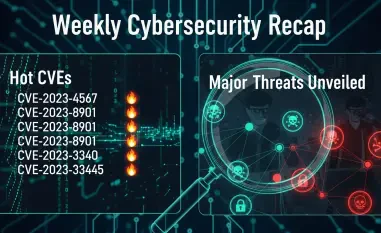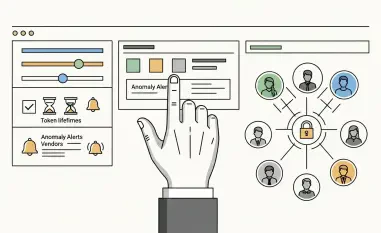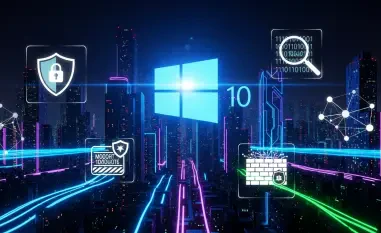In today’s rapidly evolving digital landscape, cybersecurity has become a paramount concern for organizations across industries. Traditional security measures, once deemed sufficient, are now struggling to contend with the increasing sophistication of cyber threats. As attackers deploy advanced tactics, technology developers are focusing on innovative security measures to defend against these evolving risks. The need for more resilient and adaptive security systems has never been more critical, as the consequences of a successful cyberattack can be devastating for businesses and individuals alike.
The Evolution of Modern Cyber Threats
Network attacks have transitioned from simple intrusions to highly sophisticated operations. The emergence of advanced persistent threats (APTs), zero-day exploits, and AI-driven attacks illustrates the complexity and dynamic nature of modern cyber threats. These attacks are meticulously planned and executed, often bypassing traditional security measures with ease. The deployment of AI by malicious actors further escalates the challenge as these tools can adapt in real-time, learning from each defensive maneuver to refine their attack strategies. This necessitates a fundamental shift in cybersecurity approaches, moving toward more advanced and adaptive defense mechanisms.
Furthermore, the interconnected nature of modern networks provides a larger attack surface, making it easier for cybercriminals to find vulnerabilities. The proliferation of Internet of Things (IoT) devices, cloud computing, and remote work protocols have added layers of complexity, which attackers are quick to exploit. The resilience of these threats requires a continuous evolution of defense strategies. Businesses must now navigate a treacherous landscape where static and rigid security measures fall short.
Limitations of Traditional Security Measures
Traditional security approaches, relying heavily on perimeter defenses like firewalls, find themselves outclassed in this new landscape. Firewalls, while once effective, can now be easily circumvented by attackers using social engineering, stolen credentials, or exploiting vulnerabilities in public-facing services. Additionally, signature-based detection systems, such as traditional antivirus software, struggle to keep pace with zero-day exploits and polymorphic malware. These threats can change their code to avoid detection, rendering signature-based defenses largely ineffective.
The slow pace of manual incident response further exacerbates the problem, often allowing attackers ample time to inflict significant damage before they are detected and countered. Reliance on single-factor authentication (SFA) is another glaring weakness. Password-cracking tools and phishing schemes make SFA an easy target, compromising user accounts with alarming frequency. Periodic patching, another staple of older security protocols, cannot keep up with the rapid exploitation of newfound vulnerabilities.
Moreover, relying on Virtual Private Networks (VPNs) for secure access has also become problematic. VPNs establish broad access tunnels that can be exploited if credentials are stolen, potentially giving attackers free rein over entire networks. Static security policies fail to adapt to new types of attacks, leaving systems exposed. Unencrypted internal communications and the reliance on security through obscurity further illustrate the critical shortcomings of traditional measures. These outdated approaches highlight the urgent need for a paradigm shift in cybersecurity.
The Case for Proactive Security Strategies
In the face of these advanced threats, adopting proactive and predictive security strategies becomes imperative. Relying solely on reactive measures is no longer viable given the speed and stealth of modern cyberattacks. Organizations need to anticipate potential threats and respond preemptively to neutralize them. Implementing multi-layered defenses, which encompass segmentation, continuous monitoring, and real-time analytics, can significantly enhance resilience against attacks. These strategies aim to detect and mitigate threats before they can cause substantial harm, offering a more robust defense posture.
Proactive security is about staying ahead of cybercriminals rather than reacting to breaches as they happen. This involves deploying advanced threat intelligence tools that continuously scan for vulnerabilities and threats. Technologies like Security Information and Event Management (SIEM) systems compile real-time data from various sources, providing a comprehensive overview of network health. This allows security teams to identify and address anomalies swiftly. Integration of these tools with automated incident response systems can significantly reduce the window of opportunity for attackers.
Zero Trust Architecture: Redefining Security Paradigms
The Zero Trust model represents a significant departure from traditional security paradigms. By assuming that every user and device poses a potential threat, Zero Trust enforces stringent access controls. This approach is particularly crucial as businesses increasingly operate in decentralized and cloud environments. In a Zero Trust framework, validation is required at every stage of digital interaction, ensuring that permissions are granted only to authenticated and authorized entities. This minimizes the risk of unauthorized access and curtails the lateral movement of attackers within a network.
Zero Trust operates on the principle of the least privilege, granting users only the minimum level of access necessary to perform their tasks. This principle markedly reduces the attack surface. Additionally, continuous verification is a cornerstone of Zero Trust, where trust is never assumed and always verified. This includes identity verification, device health checks, and contextual analysis of user behavior. Deploying micro-segmentation within the Zero Trust model further isolates critical assets, preventing attackers from moving laterally across the network.
Leveraging AI and Machine Learning for Defense
AI and machine learning are transforming the cybersecurity landscape. These technologies excel in anomaly detection, identifying unusual patterns and behaviors that could indicate a breach. By analyzing vast datasets in real-time, AI-driven tools can detect threats that might evade traditional defenses. Behavioral analytics powered by AI can identify insider threats and compromised accounts by observing deviations from normal user activities. This predictive capability allows for the timely interception of suspicious actions, reinforcing the overall security framework.
The integration of AI into cybersecurity extends beyond mere threat detection. Machine learning algorithms can predict potential vulnerabilities by analyzing past incidents and current network behavior. This predictive analytics capability enables organizations to preemptively address weaknesses before they can be exploited. Furthermore, AI systems can automate repetitive tasks such as log analysis and threat hunting, freeing up human analysts to focus on more complex issues.
Enhancing Network Security Through Segmentation
Network segmentation and micro-segmentation are critical for limiting the spread of attacks within an organization. By dividing the network into isolated segments, the damage from a breach can be contained, preventing attackers from accessing multiple parts of the network easily. Micro-segmentation takes this a step further by applying granular access controls, restricting an attacker’s lateral movement even within individual segments. This targeted approach enhances security, particularly in environments where sensitive data resides.
Segmentation strategies also improve compliance with regulatory requirements, as they help ensure that access to sensitive data is strictly controlled and monitored. Implementing these strategies involves using virtual local area networks (VLANs) and software-defined networking (SDN) to create secure network segments. Micro-segmentation tools enable more refined control, often using attributes such as user roles, device types, and time of day to enforce access policies. These measures provide a more flexible and dynamic approach to network security, adapting to evolving threats.
Emphasis on Encryption and Automated Response
Encryption remains a cornerstone of modern cybersecurity. By encrypting data at every layer, organizations can protect sensitive information from interception or unauthorized access. The rise of quantum computing threatens traditional encryption methods, leading to the development of quantum-resistant encryption algorithms to future-proof security measures. Automated incident response systems further strengthen cybersecurity by enabling rapid responses to breaches. These systems can detect and mitigate threats in real-time, significantly reducing the window of opportunity for attackers and minimizing potential damage.
The importance of encryption extends to all forms of data, whether at rest, in transit, or in use. End-to-end encryption ensures that data remains secure from the point of origin to the destination, significantly reducing the risk of interception. Quantum-resistant encryption algorithms, currently being developed by institutions like the National Institute of Standards and Technology (NIST), aim to protect against the future threats posed by quantum computing. Automated incident response platforms integrate with other security tools to provide a cohesive and rapid response to detected threats.
Strengthening Authentication and Access Controls
Multi-factor authentication (MFA) is a simple yet effective measure that adds layers of security beyond traditional password-based systems. By requiring multiple forms of verification, MFA makes it considerably harder for attackers to gain unauthorized access. As cloud adoption continues to rise, Cloud Security Posture Management (CSPM) tools play a vital role in ensuring secure configurations. These tools monitor cloud environments, identify potential vulnerabilities, and ensure compliance with security policies, proactively preventing minor issues from escalating.
MFA can include biometrics, one-time passwords (OTPs), and security tokens, adding a robust layer of verification to user authentication processes. CSPM tools scan cloud environments continuously, flagging misconfigurations and vulnerabilities. They provide automated recommendations and remediation steps to ensure that cloud deployments adhere to best security practices. This proactive approach to cloud security helps businesses protect sensitive information and maintain compliance with regulatory standards.
Future Technologies: Quantum Cryptography and Blockchain
Quantum cryptography holds promise for revolutionizing secure communications through theoretically unbreakable encryption methods. While still in its developmental stages, ongoing efforts by entities like the National Institute of Standards and Technology (NIST) aim to create viable post-quantum cryptographic algorithms. Blockchain technology also offers potential benefits for network security, particularly in terms of identity verification and data integrity.
Quantum cryptography could render many current encryption techniques obsolete, offering a new level of security that is nearly impossible to breach. However, it faces challenges related to implementation costs, infrastructure requirements, and integration with existing systems. Blockchain technology, known for its decentralized and immutable ledger, can enhance network security by providing transparent and tamper-proof records. This is particularly useful for ensuring the integrity of transaction data and verifying identities without relying on a central authority.
Conclusion
In today’s ever-changing digital world, cybersecurity has emerged as a top priority for businesses across all sectors. The traditional security measures that were once considered adequate are now falling short in the face of increasingly sophisticated cyber threats. Attackers are using advanced methods, pushing technology developers to create innovative security solutions to counter these evolving risks. This shift underscores the urgent need for more robust and adaptable security systems. The stakes have never been higher, as the fallout from a successful cyberattack can be catastrophic, impacting both businesses and individuals. Companies must invest in next-generation security tools and strategies to stay ahead of these digital dangers. This isn’t just about protecting data; it’s about safeguarding reputations, maintaining customer trust, and ensuring operational continuity. As the digital landscape continues to grow more complex, the call for vigilant and dynamic cybersecurity measures becomes louder. The consequences of not keeping pace with emerging threats can be devastating, making comprehensive cybersecurity efforts indispensable for modern organizations.













